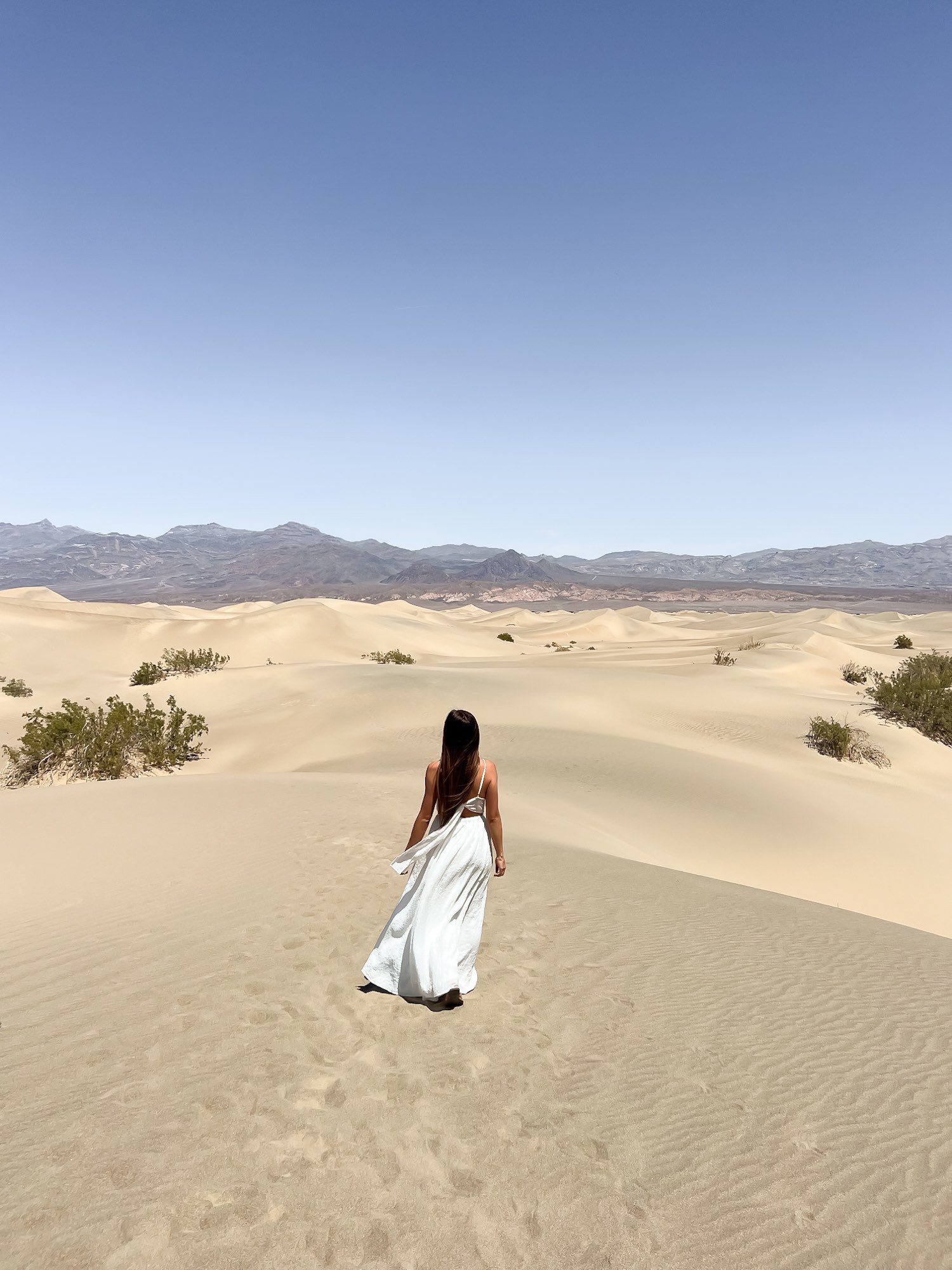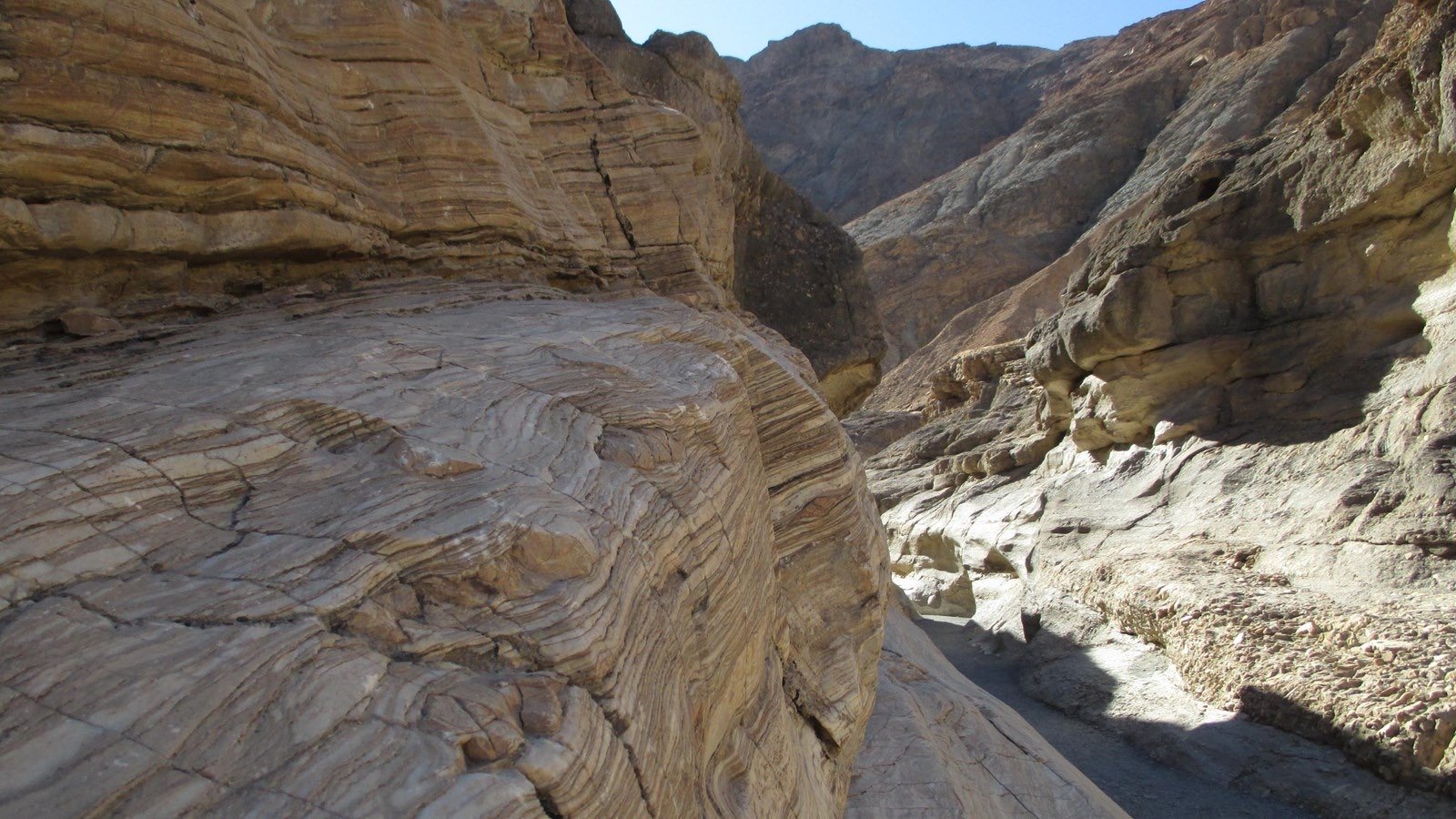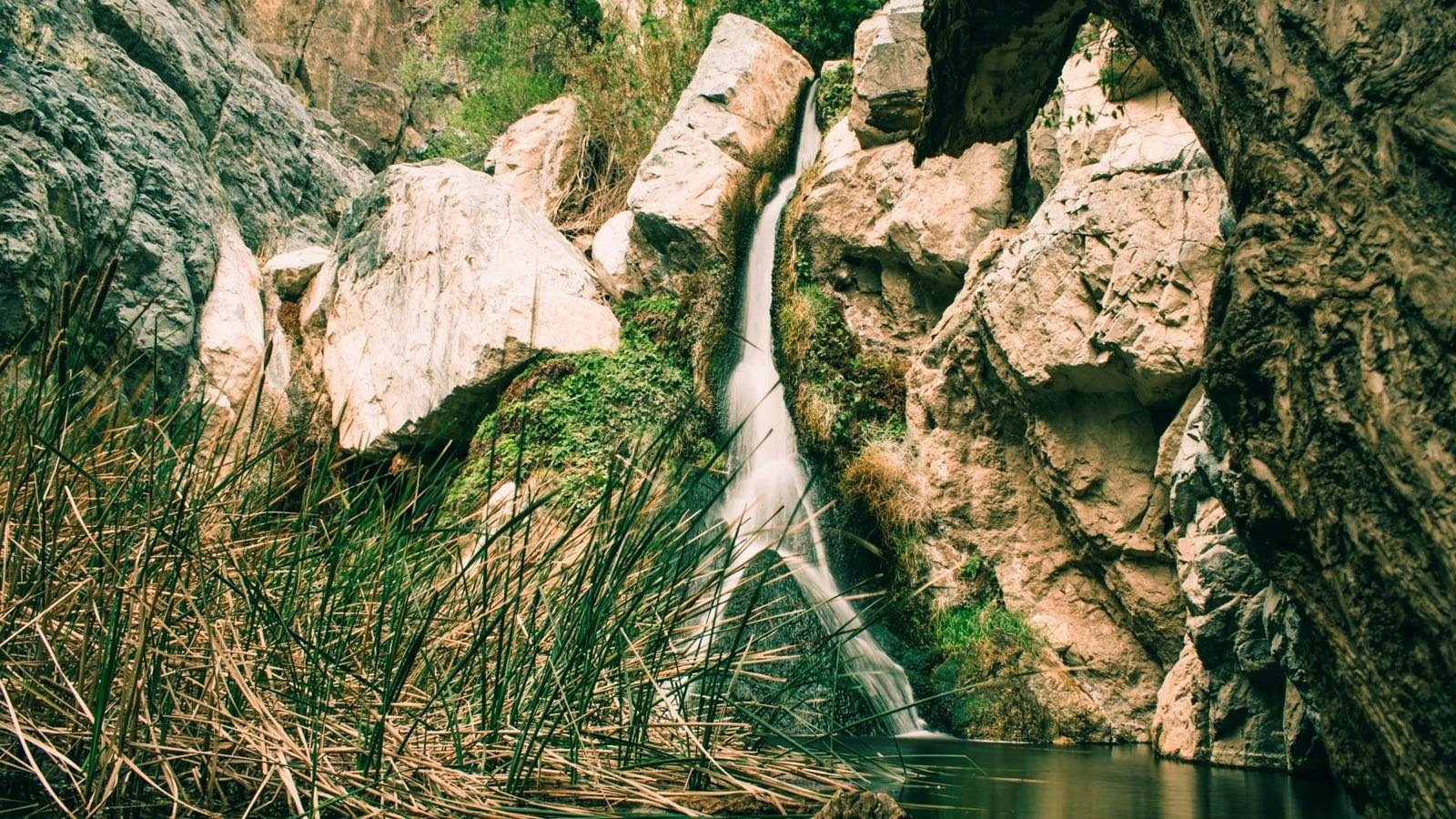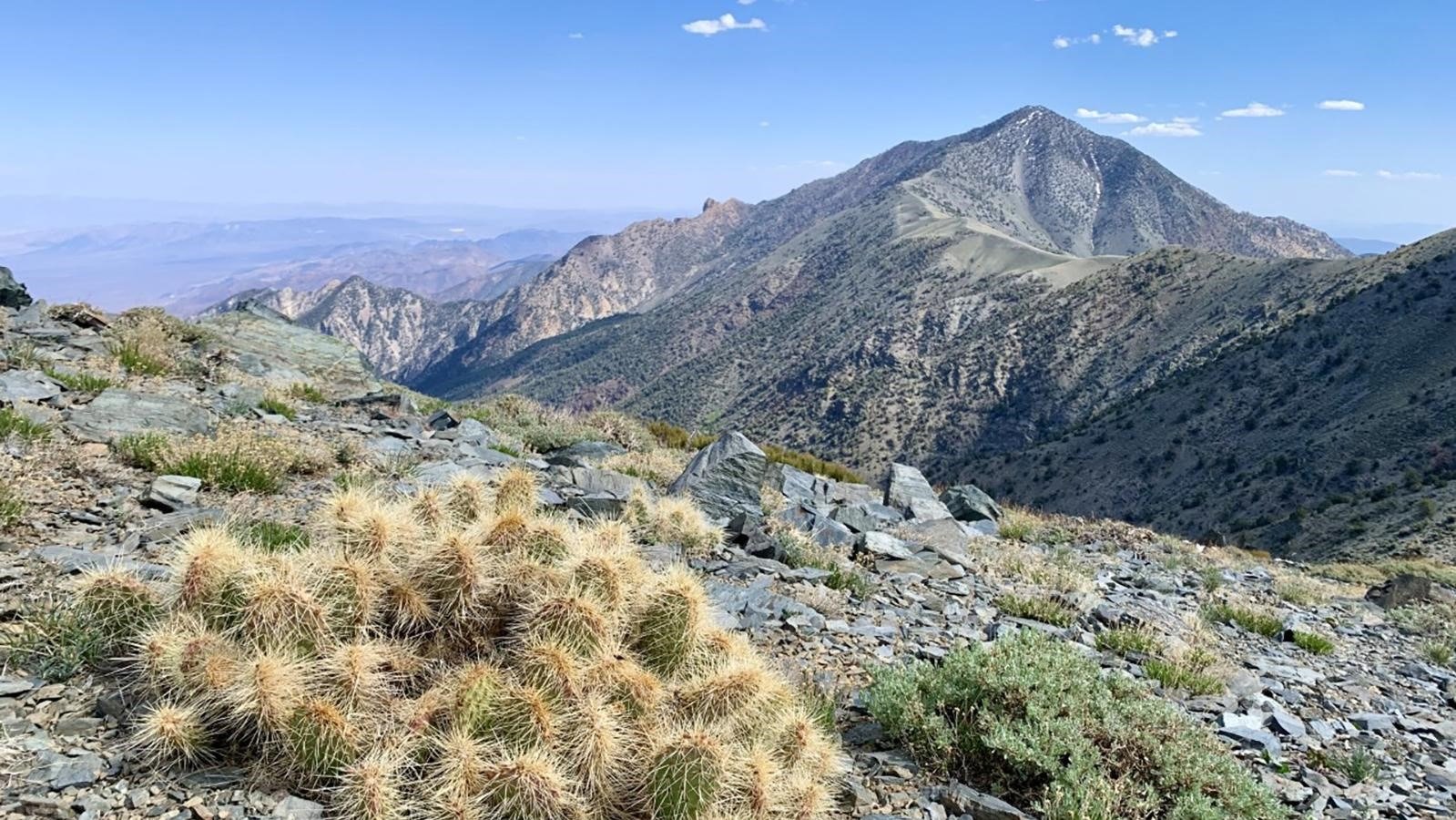25 Best Things to Do in Death Valley National Park
Planning a Death Valley trip? Explore the best things to do in Death Valley National Park—from epic hikes and sand dunes to sunrise views and desert adventures.
Credit: garrettpatz
Death Valley National Park is a place that's way more than just heat and sand. Often misunderstood as a barren wasteland, this remarkable corner of the Californian desert is, in fact, a treasure trove of natural wonders and extremes.
We're talking about a desert playground where the captivating landscapes feel like Mars and the sunsets are unreal. From the salt flats at Badwater Basin to the Insta-worthy colors of Artist's Palette, and the mysterious moving rocks at Racetrack Playa, Death Valley is the ultimate spot for those who love a bit of mystery with their adventure.
So pack your water bottles, grab your favorite sunnies, and get ready to explore the best things to do in Death Valley — the land of stark beauty and resilience. Whether you're a seasoned desert explorer or a curious first-timer, prepare to be amazed by the hidden gems and epic vistas of America's hottest, driest, and most enigmatic national park!
Credit: peter_mc_greats
When is the best time to visit Death Valley?
The best time to visit Death Valley National Park is during the cooler months of late fall, winter, and early spring, typically from November to early April. During this period, the temperatures are more moderate, making outdoor activities like hiking and sightseeing much more comfortable and safer.
Winter (December to February) - This is a great time to visit if you love cooler temperatures and no crowds. Daytime temperatures are mild (though it can be chilly, especially at higher elevations), and there is virtually no risk of heat-related illness. Winter also brings the chance of rare rain showers, which can lead to spectacular springtime wildflower blooms.
Spring (March to April) - Early spring is particularly beautiful, as this is when wildflowers can bloom if the winter brought enough rain. Temperatures start to rise, but it's still more comfortable than in the summer months. This is also a popular time, so expect more visitors.
Summer (May to September) - Summer is definitely not the best time to visit due to extreme heat, with temperatures often exceeding 120°F (49°C) in the valley. If you visit during this time, plan activities for early morning, stay hydrated, and avoid strenuous outdoor activities.
Fall (Late October to November) - The summer temperatures begin to cool down, making outdoor activities pleasant. The landscape starts to change, and visitor numbers are lower than in spring but busier than the winter.
Regardless of when you visit, it's important to be prepared for the conditions. Bring plenty of water, sun protection, and plan your activities according to the weather. Also, check road conditions and park alerts before your trip, as weather can affect accessibility to certain areas of the park.
The best things to do in Death Valley
Badwater Basin
Badwater Basin is the lowest point in North America, sitting at a mind-boggling 282 feet below sea level! This surreal landscape is famed for its vast salt flats, which look like a snowfield under the desert sun. This vast expanse of glistening salt flats is actually composed of almost pure table salt! When you visit, make sure to take the iconic walk out onto the flats; the further you go, the more intricate the salt patterns become. It's a photographer's paradise, especially during golden hour when the setting sun casts incredible hues across the salt. And listen closely as you can hear the salt crystals popping and cracking beneath your feet!
Credit: christian_garcia
Devil’s Golfcourse
Just a short drive off Badwater Road brings you into this otherworldly terrain called the Devil's Golf Course. This vast, rugged expanse of crystallized salt formations is so jagged and uneven that it's said only the devil could play golf here. While wandering this surreal landscape, remember to wear sturdy shoes (it's as sharp as it looks!) and bring your camera – the textures and shadows at sunset are a photographer's dream. If you don’t have proper footwear, or don’t want to take the risk, no worries, you can see them right from the parking area!
Zabriskie Point
Zabriskie Point is a must-visit spot in Death Valley that's all about epic views and stunning sunrises! Just a short, easy drive from Furnace Creek, followed by a breezy walk up a well-maintained path, leads you to this incredible overlook, where you're greeted with a surreal landscape of rippling, golden badlands. This stunning landscape, shaped by millions of years of erosion, is especially magical during sunrise or sunset when the light plays off the peaks and valleys, creating a dramatic canvas of vibrant colors and shadows — it’s the perfect spot for photographers!
Credit: wwarby
Dante's View
Dante's View is a breathtaking overlook in Death Valley that offers one of the most stunning panoramic views you'll ever lay eyes on. Perched over 5,000 feet above the valley floor, it's an easy drive from Furnace Creek, just follow the signs for Dante's View Road and prepare for a bit of a winding ascent. Once there, you're treated to a majestic vista that spans across the salt flats of Badwater Basin to the towering peaks of the Panamint Range — a perfect spot for sunrise enthusiasts and photographers alike! Don't forget to bring a jacket, as it can be quite breezy up there, and get ready to have your breath taken away by the sheer vastness and beauty of Death Valley from above!
Artist’s Drive and Artist's Palette
Artist’s Drive is a one-way, 9-mile scenic loop, easily accessible from Badwater Road, that winds through multicolored volcanic and sedimentary hills, offering a kaleidoscope of colors that look like an artist's dream palette. The best time to visit is late afternoon, when the sunlight enhances the vibrant hues of blues, greens, reds, and yellows, creating a perfect backdrop for awe-inspiring photos. Don't forget to pull over at the Artist's Palette viewpoint for an awe-inspiring overview of these beautiful pastel-colored hills. If you’re feeling a bit more adventurous, you can hike down and walk through these colorful canyons for an up close and personal look at the stunning gallery of geological colors.
Mesquite Flat Sand Dunes
Mesquite Flat Sand Dunes are a must-visit spot in the heart of Death Valley! Located near Stovepipe Wells, these dunes offer an accessible yet otherworldly experience, with the largest dunes reaching about 100 feet in height. You can choose to view these dunes from the parking lot or walk out as far as you like. The best times to visit are during sunrise or sunset, when the light casts dramatic shadows and the temperature is more comfortable for exploring. Don't miss the chance to wander barefoot on the soft sand (do not attempt this during summer or you may scald your feet), capture stunning photographs, or even try sandboarding if you're feeling adventurous.
Credit: grin
Racetrack Playa
Racetrack Playa in Death Valley, is famous for its mysterious moving rocks. This remote and flat dry lakebed is accessible via a rugged 27-mile dirt road from Ubehebe Crater, best navigated with a high-clearance, 4WD vehicle due to rough conditions. Once you arrive, you'll be greeted by the famous “sailing stones” — these rocks somehow glide across the dry lake bed, leaving long, winding tracks behind them. This phenomenon puzzled scientists and remained a mystery to visitors for years, until recently explained as a combination of ice formation and light winds. It's a perfect spot for photography, especially in the golden hours of dawn or dusk, and a great place to feel the eerie, quiet solitude of one of nature's most intriguing natural puzzles.
Credit: NPS
Ubehebe Crater
The Ubehebe Crater is a massive volcanic crater that's a testament to Death Valley's fiery past. This awe-inspiring natural wonder, easily accessible by a short drive north of Furnace Creek, was formed by a phreatomagmatic eruption (a volcanic eruption involving water and magma) thousands of years ago. Standing at the rim, you're treated to a breathtaking view of the half-mile wide, 600-foot deep crater, with its dark, rugged walls — it's a perfect spot for a scenic hike around the rim or a challenging descent to the bottom. Don't forget to bring your camera and plenty of water, and get ready to be wowed by this dramatic reminder of Earth's volcanic power!
Scotty's Castle
Scotty’s Castle is a fascinating 1920s villa nestled in the northern reaches of Death Valley. This testament to the Roaring Twenties' extravagance was built by wealthy Chicago businessman Albert Johnson, inspired by his friendship with the charismatic con-man and prospector, Death Valley Scotty. During your visit you can expect guided tours that reveal the rich history, hear tales of the mysterious Scotty who gave this hidden gem its name, stunning architecture, and many legends surrounding this desert oasis. Note: This area was severely impacted by a flood and is currently closed for repair. Check National Park Service for updates.
Credit: NPS/E. Letterman
Golden Canyon and Gower Gulch Loop
Distance: 4.4 miles | Time: 2-3 hours | Difficulty: Easy to moderate
The Gower Gulch Loop trail starts at the Golden Canyon parking area, just a short drive from Furnace Creek, and takes you through a winding maze of golden-hued badlands, with breathtaking views and geological wonders at every turn. As you trek, keep an eye out for the famous Red Cathedral and Manly Beacon, and immerse yourself in the landscape that was once a filming location for Star Wars! Whether you're an avid hiker or a casual explorer, this trail offers a perfect blend of adventure, natural beauty, and a touch of Hollywood magic.
Credit: NPS/E. Letterman
Mosaic Canyon
Tucked just a short drive from Stovepipe Wells, Mosaic Canyon offers an easy-to-navigate trail that winds through narrow passages and polished marble walls, showcasing nature's incredible artistry. As you explore, you'll be amazed by the smooth, water-sculpted rock surfaces and the mosaic-like breccia formations, hence the name. Whether you're up for a short stroll or a more adventurous scramble, Mosaic Canyon is a perfect spot to experience the quieter, more textured side of Death Valley's dramatic landscape.
Credit: NPS/Patrick Taylor
Star Gazing
As a designated Dark Sky Park, Death Valley is one of the best places in the world for stargazing! With its minimal light pollution and clear desert skies, spots like Badwater Basin, Mesquite Flat Sand Dunes, and Harmony Borax Works offer an unparalleled view of the Milky Way, shooting stars, and constellations. You can venture out on your own with a blanket and a thermos of hot cocoa for a cozy, self-guided night under the stars, or join one of the park's ranger-led astronomy programs for a more informative experience. Whether you're an amateur astronomer or just love the magic of a starry sky, Death Valley's night-time spectacle is an awe-inspiring, must-do adventure!
Credit: NPS/E. Hoerner
Twenty Mule Team Canyon
Twenty Mule Team Canyon is a place where history and stunning landscapes intertwine. This easy-to-navigate, one-way dirt road, just a short drive from Furnace Creek, winds through beautifully eroded, colorful badlands — a testament to the canyon's past when 20-mule teams hauled borax out of Death Valley in the late 1800s. As you drive or stroll through this 2.7-mile loop, you're not only tracing the tracks of a bygone era but also treated to a visual feast of unique geological formations. Don't forget to bring your camera and capture the intricate patterns and hues of the canyon walls, making this a perfect, leisurely adventure for those who love to combine scenic drives with a touch of history.
Credit: NPS/Jason Gray
Darwin Falls
Did you know that there’s a waterfall in Death Valley Nation Park?! Darwin Falls is a lush surprise in one of the driest places on Earth. Tucked away on the western edge of the park, near Panamint Springs, this unexpected hidden gem is reached by a relatively easy 2-mile round trip hike, which takes you through a narrow canyon to the refreshing sight of a year-round waterfall cascading into a small, serene pool. As you trek, keep your eyes peeled for the diverse wildlife and vibrant greenery that thrive thanks to this rare water source. Darwin Falls is a perfect spot for those looking to add a splash of tranquility and a hint of green to their desert adventure – don't forget to pack water and wear sturdy shoes! Note: This area was severely impacted by a flood and is currently closed for repair. Check National Park Service for updates.
Grotto Canyon
Nestled in the rugged terrain near Furnace Creek, Grotto Canyon offers a more challenging adventure, with a trail that involves some fun rock scrambling and navigating through narrow passages. As you make your way through the canyon, you'll be surrounded by towering walls and unique rock formations, leading to the namesake grotto, where boulders create natural rooms and passageways. Remember to wear sturdy shoes, bring plenty of water, and be prepared for a bit of a workout.
Credit: NPS/Jamie Jirele
Eureka Dunes
Nestled in the northernmost part of Death Valley National Park is Eureka Dunes. These towering dunes, some of the tallest in North America, are accessible via a scenic but rugged drive on Eureka Valley Road, a journey best suited for high-clearance vehicles. As you explore these vast, undulating sands, you might even experience the “singing sands” phenomenon, where the shifting grains create eerie, otherworldly sounds. It's a perfect spot for those looking to escape the crowds, indulge in some stunning photography, or simply sit and absorb the profound silence and beauty of this isolated dune field.
Credit: NPS/Jason Gray
Natural Bridge
Natural Bridge in Death Valley, is a stunning example of nature's architecture. This remarkable geological formation is easily accessible via a short, 1-mile round trip hike from its dedicated parking area, just a 15-minute drive south of Furnace Creek. As you walk through the canyon to this massive natural stone bridge, towering 50 feet above, you'll be treated to a spectacular display of erosion and natural forces at work. Don't forget to snap some photos under the bridge and explore the small, naturally formed windows and smooth chutes nearby, making this an ideal quick adventure for families and photographers alike.
Credit: NPS / J. Jurado
Telescope Peak Trail
Distance: 14 miles | Time: 7-9 hours | Difficulty: Hard
Telescope Peak Trail in Death Valley, where the views are as breathtaking as the climb. This challenging but rewarding hike starts from Mahogany Flat Campground, reachable by a high-clearance vehicle, and takes you on a 14-mile round trip to the highest point in Death Valley National Park at 11,043 feet. As you ascend, you'll traverse through stunning landscapes, from pine forests to rocky ridges, with the reward of panoramic views of the park and beyond at the summit. Don't forget to pack plenty of water, snacks, and your camera — the diverse scenery and sweeping vistas are a hiker's dream come true!
Credit: NPS/ Jason Gray
Salt Creek Interpretive Trail
Distance: .5 miles | Time: 30 minutes | Difficulty: Easy
Salt Creek Trail is a boardwalk adventure that's a world away from the desert's usual sand and heat. This easy, half-mile loop, accessible from a short drive west of Furnace Creek, leads you through a rare, spring-fed creek that's home to the incredibly resilient Death Valley pupfish, tiny fish that have adapted to the extreme saltiness and temperature fluctuations of the creek. As you stroll along the boardwalk, especially in the cooler months, keep an eye out for these little survivors, and enjoy the contrast of lush greenery against the stark desert backdrop. It's a perfect, family-friendly spot for a leisurely walk and a unique opportunity to witness one of nature's most fascinating examples of adaptation. Note: This area was severely impacted by a flood and is currently closed for repair. Check National Park Service for updates.
Furnace Creek
Furnace Creek is an oasis that's as lively as it is unexpected in this rugged landscape. Centrally located and easily accessible in the park, Furnace Creek is the hub for many Death Valley explorations, offering accommodations, dining options, and even a visitor center where you can learn all about the valley's intriguing history and geology. Don't miss the chance to tee off below sea level at the Furnace Creek Golf Course, the world's lowest elevation golf course, or take a dip in the spring-fed pool to beat the desert heat. Furnace Creek is not just a convenient base for your Death Valley adventures; it's a destination in itself, offering a blend of comfort, history, and unique recreational activities in one of the most extreme environments on Earth.
Titus Canyon Drive
Titus Canyon offers one of the most thrilling off-road experiences in Death Valley National Park. This one-way, 27-mile adventure starts from Nevada's NV-374, leading you through a stunning array of landscapes, from rugged mountains and a ghost town (Leadfield) to petroglyphs and finally, the narrow, towering walls of Titus Canyon itself. The drive, suitable for most standard vehicles under normal conditions, culminates in an exhilarating passage through the canyon's dramatically narrow gorge. It's a must-do for those who love combining history, geology, and a bit of adrenaline — just remember to check road conditions beforehand, as they can vary!
Harmony Borax Works
Harmony Borax Works is where the history of the famous 20-mule teams comes to life. Located just a short, easy drive north of Furnace Creek, this historic site offers a glimpse into the 1880s borax mining era, crucial to Death Valley's human history. Stroll along the interpretive trail, where you can see the remains of the refinery and the famous wagon used for transporting borax, and learn how this 'White Gold of the Desert' was processed and shipped out of one of the harshest environments in America. It's a quick but fascinating stop, perfect for adding a touch of historical intrigue to your Death Valley adventure.
Credit: Heath Grote via All Trails
Marble Canyon
Marble Canyon is a lesser-known but absolutely breathtaking slice of the park. Nestled in the Cottonwood Mountains, this hidden gem is accessed via a moderately challenging hike that starts near Stovepipe Wells, leading you through narrow passages and polished marble walls that create a photographer's paradise. As you wander through the canyon, marvel at the smooth, water-carved marble and the vibrant colors streaking the canyon walls, a testament to the area's unique geological history. It's a perfect spot for those seeking a bit of adventure away from the more crowded areas, offering peace, beauty, and endless photo opportunities.
Saline Valley Dunes
The remote and enchanting Saline Valley Dunes of Death Valley National Park, is a hidden oasis of peace and natural beauty. Tucked away in one of the park's most secluded areas, these pristine sand dunes are accessible via a challenging drive on rugged, unpaved roads, best suited for high-clearance, 4WD vehicles. Once there, you're greeted by the serene majesty of untouched dunes, perfect for peaceful hiking, photography, or simply sitting back to enjoy the stunning contrast of soft sands against the rugged desert backdrop. Also, fun fact: Saline Valley is also home to mysterious hot springs, offering a unique and relaxing soak in the middle of the desert, if you're up for the extra trek to find them.
Look for the wild burros of Death Valley
Descendants of animals imported by miners in the 19th century, Death Valley’s adorable wild donkeys are often spotted in the Furnace Creek, Stovepipe Wells, and Beatty areas, casually grazing or meandering along the park's roadsides. While it's always a delight to see them, remember to admire from a distance, and avoid feeding or approaching them as they are wild animals and should remain as such. Unfortunately, they are considered an invasive species so the park service is actively working to reduce and remove the current population, so keep your cameras ready and your eyes peeled, especially during the cooler parts of the day, for a chance to spot these elusive burros before they’re fully removed from the park.
Author
Nicole Neissany - Founder of Wear She Wanders. Connect with Nicole: Instagram | Pinterest






















